Understanding custom domains and how to pick the right one is crucial for making your site unique, accessible, and memorable for your customers. So, let’s take a look at the benefits of custom domains and how to get started with yours.
Table of Contents
- What is a custom domain?
- How much does a custom domain cost?
- How to Get a Custom Domain
- What are the benefits of a custom domain?
- Custom Domain Examples
- What are best practices for custom domain names?
- Buy a Custom Domain for a Credibility Boost
What is a custom domain?
A custom domain is a unique branded label attached to your website's IP address. Customers who want to visit your site type your custom domain name into their browser's address bar. There's no need to memorize a lengthy IP address. HubSpot's custom domain, for example, is hubspot.com.
Domain names are required for proprietary reasons, as they provide you ownership over your site's address.
Think of it this way: I have a home address so visitors can navigate to my home with the help of a GPS. Similarly, I would have a custom domain name so my customers can easily find my website.
One of the other benefits of a custom domain is that once you claim it, it's off the market — no one else can use it.
Having a website URL is the core of a custom domain. But it’s important for other reasons, too.
Custom Domains for Email
When you get marketing emails (or any business emails for that matter), you’ll see that most of the time the email address correlates to a brand’s website. So emails from a HubSpot team member, for example, would come from “name@hubspot.com.”
I’m always a little surprised to receive emails from established businesses — even small ones — that do not use a custom domain for their emails. Relying on “yourbusinessname@gmail.com” might mean your email account is free, but I think you’re missing the opportunity to reinforce your brand and establish a level of trust and professionalism.
Pro tip: For larger businesses, you might also want different versions of a custom domain to create email addresses like “name@businessname-support.com.”
Generic Domains Versus Custom Domains
Generic domains are when you use words to describe your products or services rather than choosing a company name for your URLs. There’s huge room for debate here, but I personally think generic domains can look a bit “spammy.”
Example: Let’s say I’m running an auto repair shop in Nashville. I could go with a generic domain name like “autorepairnashville.com.” People generally choose domains like this in the hopes that it helps their website rank on search engines. But let’s take a look at the results that come up for “auto repair shops in nashville.”
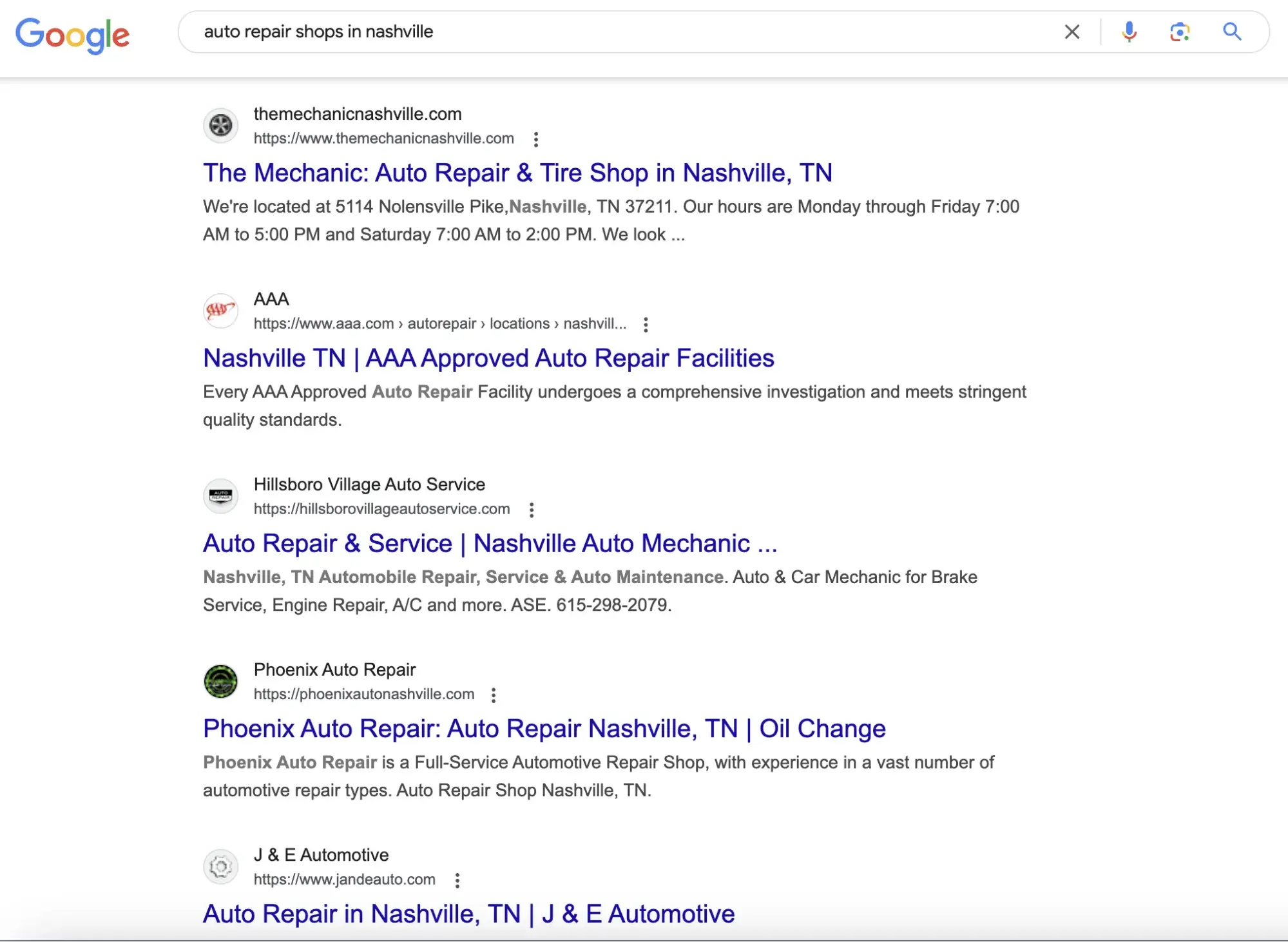
Not a generic domain in sight! These custom domain names are branded, and I think it automatically (no pun intended) lends a certain level of credibility to these businesses that a generic domain name would not. And they’re still ranking in the top ten search results for a super valuable keyword search. So, this is another example of how custom domains can really help your brand.
Domain Extensions
Another thing I’d like to quickly note about custom domains is the ability to mix and match with different domain extensions. For example, “hubspot.com” is a different custom domain to “hubspot.org.” Check out that article for more info and how it plays into your custom domain.
AI-Generated Custom Domains
Established businesses generally pick a name first, and then find a custom domain that matches it. But what if you’re starting from scratch?
If you’re having trouble choosing a custom domain name, AI tools can help. I recommend trying out tools like BrandBucket or DomainWheel to get inspiration and options.
Here’s how it looks on DomainWheel:

Enter some keywords to get some ideas. I continued with our Nashville auto repair shop example and here’s what I got:
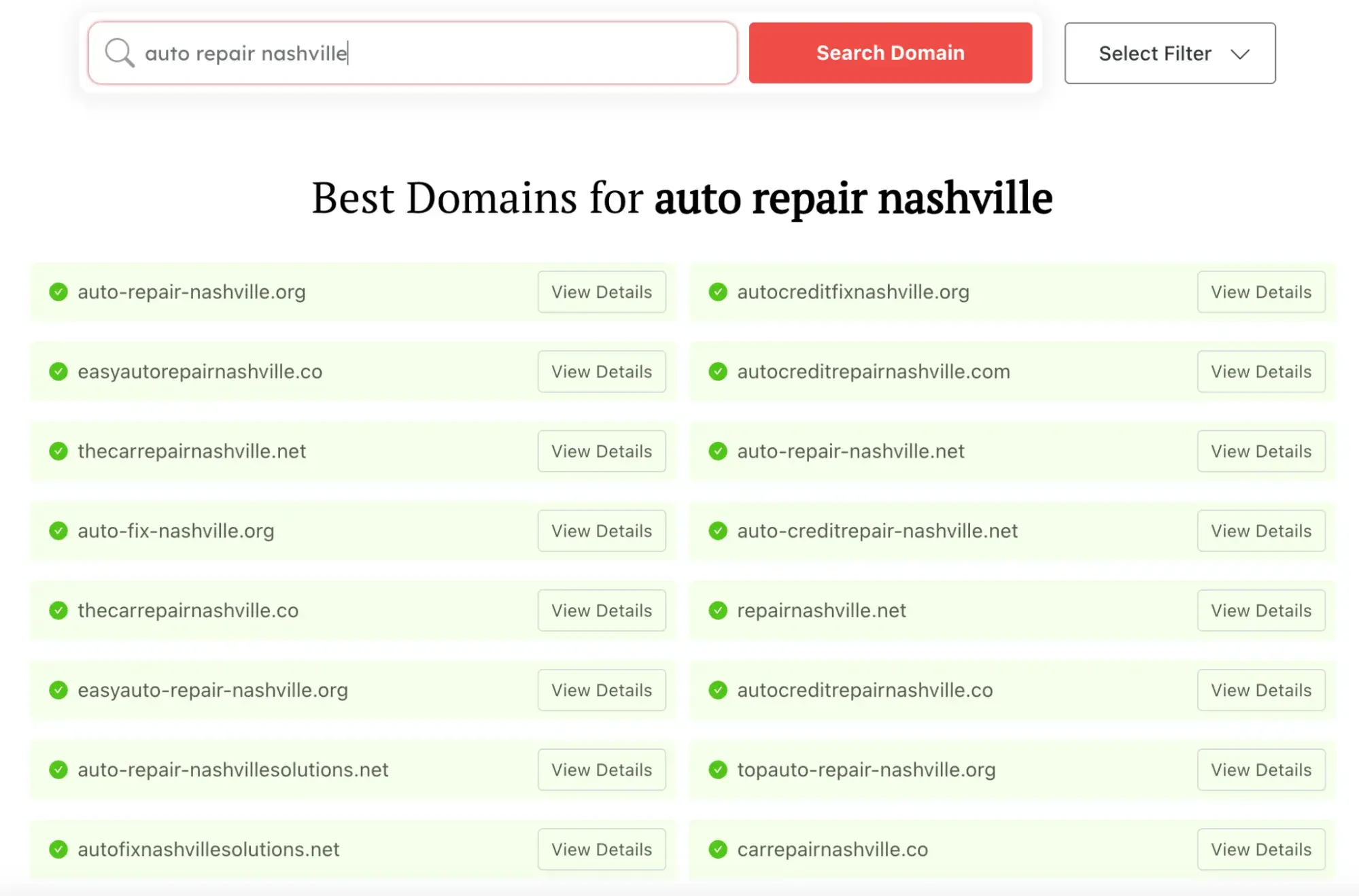
True, these are more generic domains. But you could search a brand name you have in mind and go through the same exercise.
Pro tip: This is especially useful if “yourbusinessname.com” is already taken and you need to find an alternative.
What are the benefits of a custom domain?
In addition to creating a space for your business to live online, a custom domain has other benefits. Here are some of the top reasons I recommend selecting a personalized domain name.
Brand Identity
Your custom domain name becomes your company's online moniker. If I’m searching for a particular company online, I expect the domain name to match or closely resemble the company name. It’s about staying consistent across your brand identity and, crucially, making your website and your business more discoverable online.
Credibility
A custom domain name boosts credibility and makes your website appear legitimate to visitors.
If I didn’t set up a custom domain for a website before publishing it, the website builder I’m using typically assigns a subdomain of their own website. So your website would be published under “yoursitename.wix.com” for example or “mywebsite1@sqaurespace.com.”
True, my website would be live. But I would likely struggle to rank in search engines and it wouldn’t be a super professional look to present to customers.
Memorability
The more straightforward your domain name is, the easier it is to remember. The easier it is to remember, the more likely people will remember it when typing in their search bar — and that means more traffic directed to your website.
Differentiation From Competitors
Using a clean, catchy custom domain is also useful for differentiating yourself from competing sites with clunkier domains.
Let’s go back to my imaginary Nashville auto repair shop. Expecting a customer to type in “nashvilleautorepairshop.com” is a bit unrealistic. But “jandeauto.com” or “themechanicspot.com” have a nice, memorable ring to them.
Authority Boost
A custom domain name boosts search authority — if you use it right. It takes time to accumulate quality content, internal links, and backlinks, so older domains typically have more authority.
That’s why investing in a custom domain from the get-go pays off when it comes to visibility. It gives your site time to grow and establish authority. If you try to make the switch later, you’ll be working from ground zero again and search engines will only see a brand new domain that needs to start from scratch.
Custom Domain Examples
Now let’s take a look at some custom domain examples to further explain the concept and how to choose your domain.
1. Asana.com
Asana’s custom domain is a great example of a brand-first domain that is short, snappy, and memorable. There’s no extra squeezing of keywords into the website address and it reinforces their brand recognition.

Similar examples I like include:
- Figma.com
- Apple.com
- Stripe.com
2. Booking.com
I take it back — it’s entirely possible to combine search visibility and keyword-focused domains with brand reinforcement. Booking.com is the classy version of doing this, where the category keyword matches the brand itself.
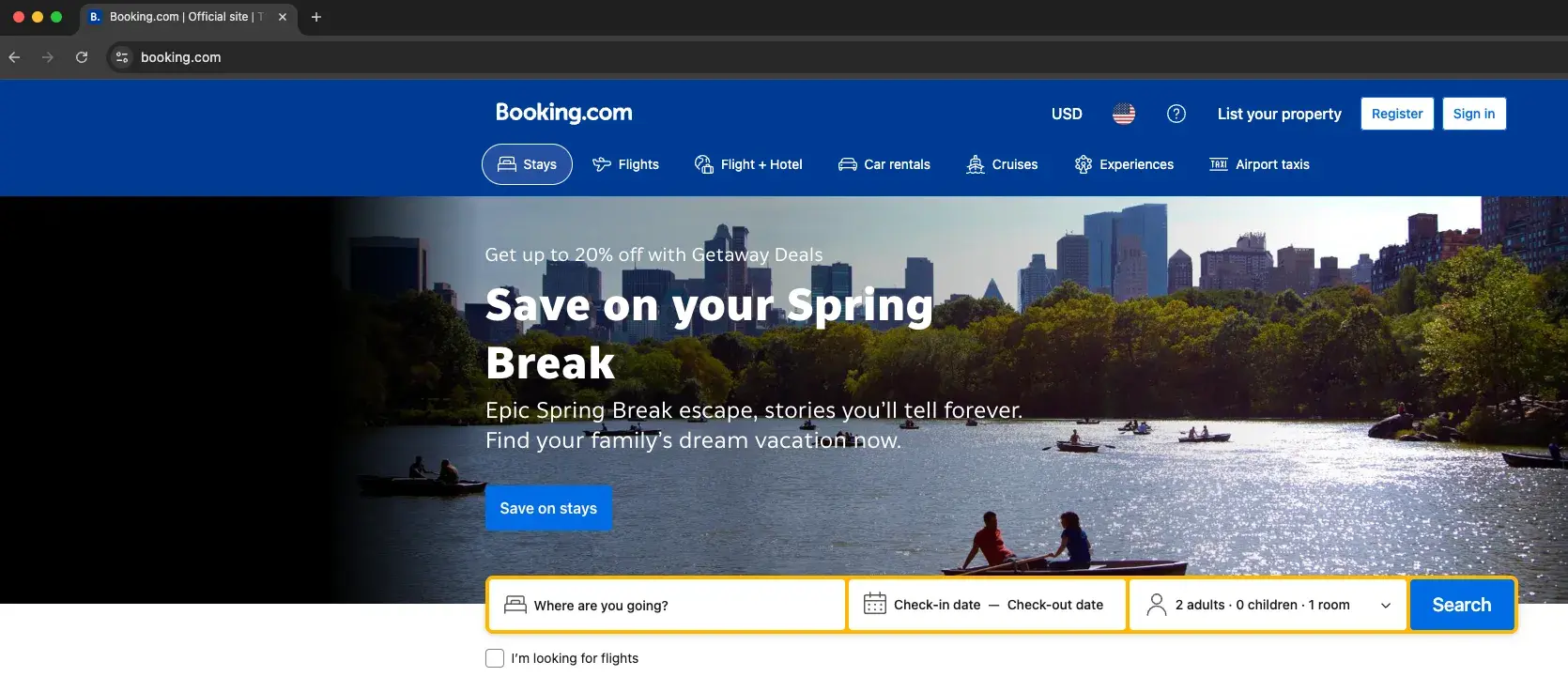
I still recommend being extremely careful with this strategy. The only reason it works is because the brand matches the keyword category. It has huge benefits if you can pull it off, but I would caution anyone against being too keyword-led with their custom domain choice.
3. Coursera.org
Coursera’s custom domain is another interesting combination. The “.org” extension is indicative of a non-profit, while the brand name “Coursera” lends itself to the educational focus of the site.
I think this is a winning combination in terms of using both the second-level domain (the business name) and the domain extension to reinforce both brand identity and the purpose of the site.
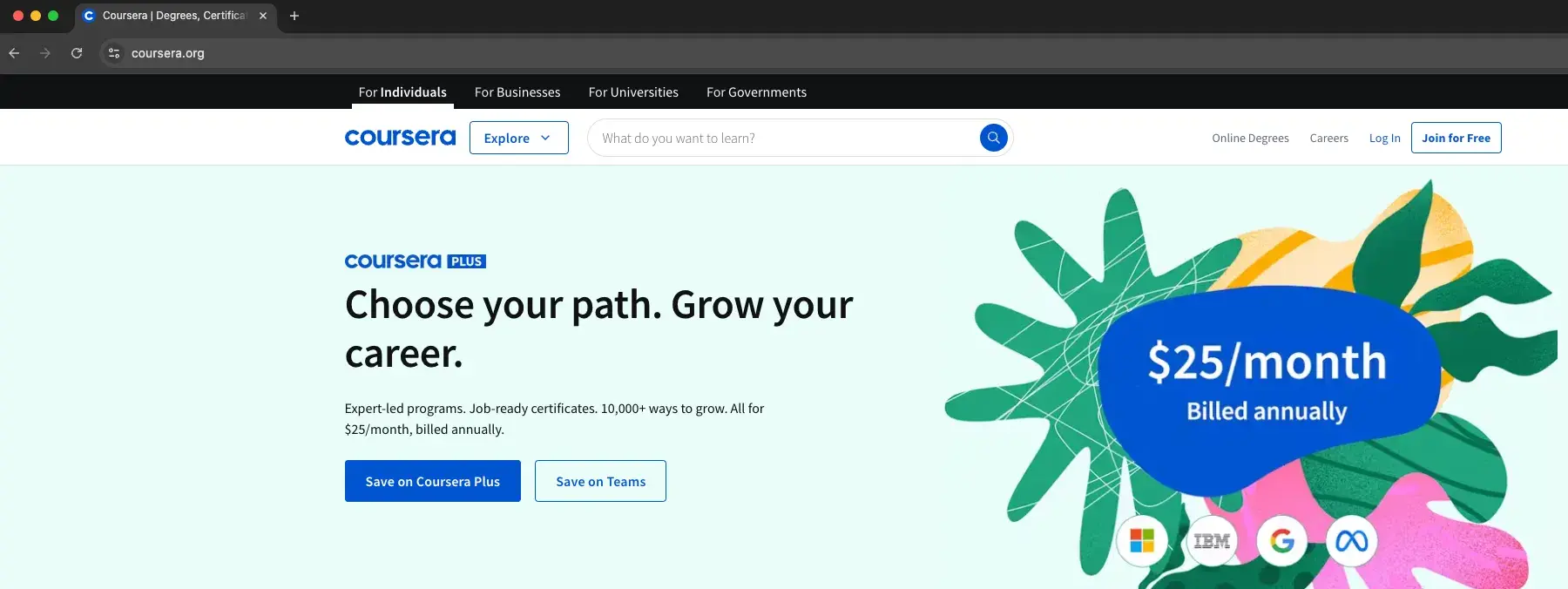
4. Theguardian.com
The Guardian is a news outlet based in the U.K. Why am I including it here? It used to be hosted at theguardian.co.uk. But, as the company evolved, it transitioned to “.com” as a reflection of its now much wider audience base.
In other words, it’s a good example of how your website structure and domain can evolve as your business does.

5. Moz.com
This popular search engine marketing tool has a custom domain that’s as short and snappy as they come. The company’s original name was SEOMoz, but moz.com has that snappy, brand recognition that, in the long run, can be far more powerful than having a keyword included in your custom domain.
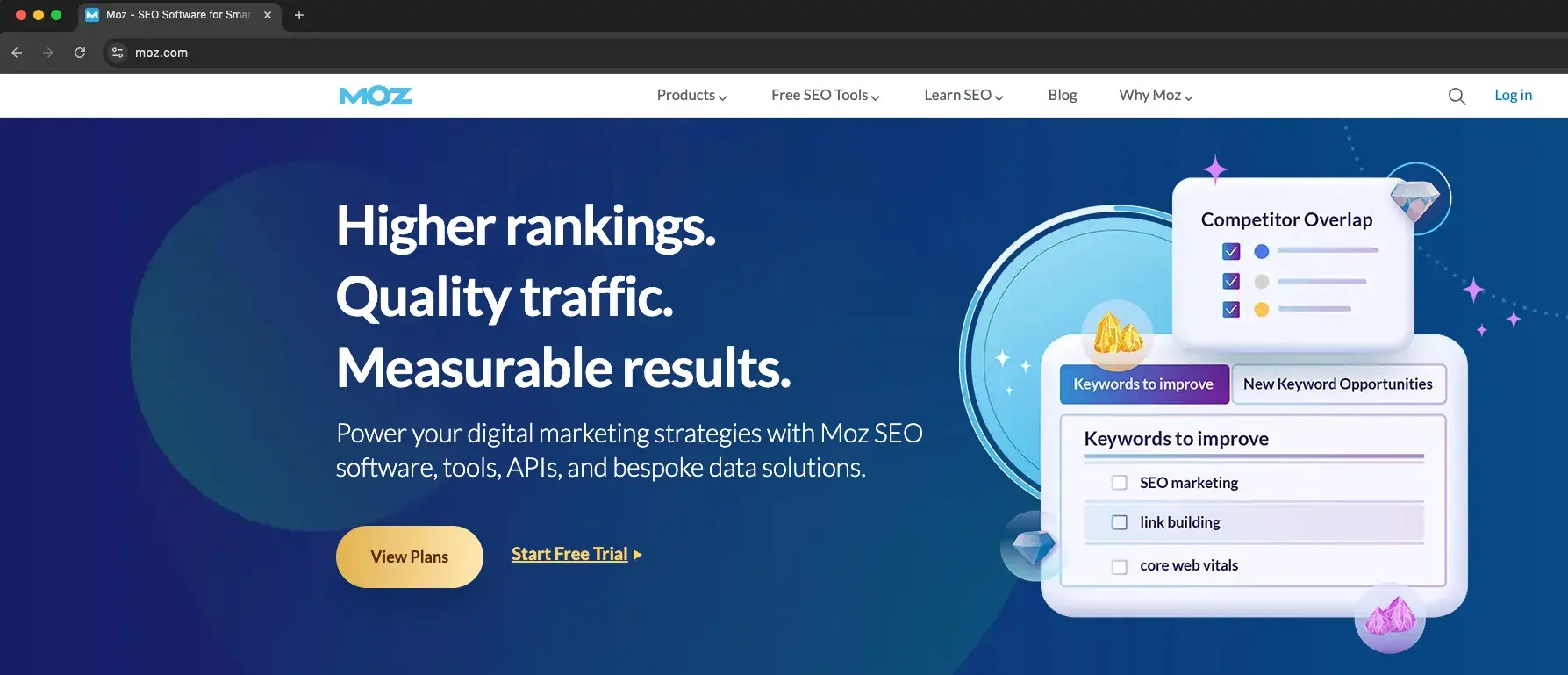
6. Gousto.co.uk
Here’s a brand that I think probably had quite a tricky discussion when it comes to their domain.
Gousto is a food box service and app that operates in and serves the U.K. So, their custom domain makes total sense.
But gousto.com was taken, even if they wanted it and, as of writing, it doesn’t lead anywhere. While this may cause problems if Gousto ever expands into markets outside the U.K., settling for gousto.co.uk in this instance makes perfect sense.

7. Generalassemb.ly
See what they did there? General Assembly is a training hub for people in the tech industry.
But what do you do when generalassembly.com is taken? You come up with this genius hack using a domain extension typically used for websites based in Libya to make your custom domain your exact brand name.
I love this example because it shows how creative you can get with custom domains if you’re willing to think outside the box.

8. Getharvest.com
There are a ton of businesses all over the world. Plus, some people out there have been buying up custom domains forever in the hope of selling them off at a much higher price. This means the custom domain space can be crowded and expensive.
For example, Harvest is a time-tracking app. With harvest.com taken, they implemented a workaround that’s common in the SaaS space by adding “get” to the start of their brand in the domain name.

What are best practices for custom domain names?
So you've decided to pay for a custom domain name. Congratulations on taking a significant first step towards establishing search authority, credibility, and trust.
Here are a few things I recommend you consider when coming up with a domain name.
- Keep it short and sweet. Even if I’m working with a lengthy business name, I try to keep it brief — while maintaining cohesiveness with the brand.
- Make it unique. I want site visitors to easily navigate a website, not a competitor‘s, right? Where possible, make sure there’s no confusion with your domain name.
- Don't overcomplicate things. Domain names that are easy to spell and pronounce are the most successful.
- Hint at what you do. My domain name should provide visitors with an idea of what my business is all about. Take Google, for example. This popular search engine was almost named Alphabet or BackRub, but cofounders Larry Page and Sergey Brin ultimately decided on Google. It derives from the word “googol,” an enormous number that mirrors the numerous web pages indexed by the search engine.
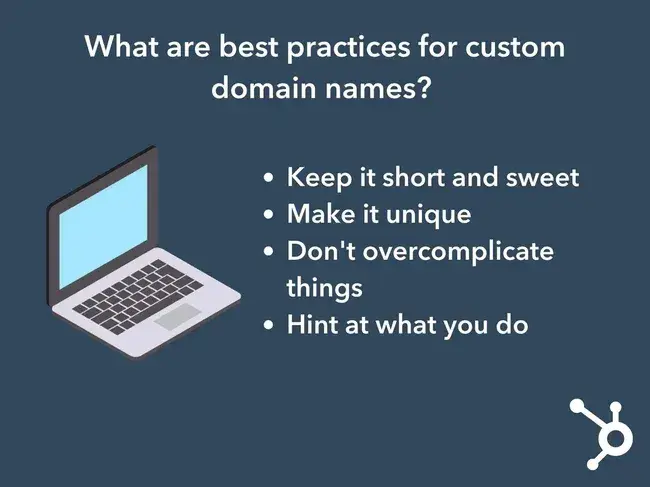
Now that we’ve gone through the benefits of a custom domain, I want to tackle how much it costs to acquire and register one.
How much does a custom domain cost?
Typically, a “.com” domain name — the most popular extension — ranges between $10 to $30 per year. Several factors influence the cost, including the domain registrar you're purchasing it from, the extension desired, and how SEO-friendly it is.
Nearly all website building platforms, from hosted website builders to self-hosted CMS platforms, include an option to register a domain name in the sign-up process. And some hosting platforms, such as Squarespace, offer a free year of domain registration with sign-up.
Of course, this appeals to new site owners who want to keep website costs down, and I sometimes recommend them for businesses who want to manage the site themselves on an ongoing basis. But I always check the renewal fee before we sign on the dotted line so my clients don't accidentally commit to an exorbitant annual rate.
Alternatively, some hosted platforms such as Content Hub and providers like SiteGround require you to purchase a domain from a third-party domain registrar like GoDaddy or Namecheap. If I go that route, I’ll need to connect it to my account (more on how to do that below).
In general, I expect to pay somewhere between $10 and $30 a year for a domain. However, the extension I select can significantly impact the price. Below, you can see how different extensions alter the cost of a custom domain name.

How to Get a Custom Domain
- Pick your domain registrar.
- Search your desired name.
- If that name is taken, try different variations and domain extensions.
- Add domain privacy and protection to your cart.
- Purchase alternatives of your custom domain.
- Select your term of registration.
- Buy an email domain and other add-ons.
- Enter your payment information.
- Connect your domain to your hosting account.
I’ve outlined the nine steps I follow to get a custom domain and connect it to a hosting account.
This process depends on two factors:
- The platform I’m building the site on.
- The domain registrar which I’m purchasing from.
In the following example, I’ll explain the steps of buying a domain from Domain.com and connecting it to HubSpot in more detail. You can host all your landing pages, blogs, and website pages on HubSpot and start building search authority.
1. Pick a domain registrar.
When choosing a domain registrar, I usually evaluate the cost, available domain names, privacy, expiration fees, and reputation of my options before making a decision. Domain.com, for instance, offers domain registration for as low as $2.99. Most .com domains on the platform cost about $9.99, making it one of the most cost-friendly options.
Pro tip: I recommend taking a look around some of the best domain registrars from which you can buy your custom name. These include Namecheap, GoDaddy, Name.com, and BlueHost.
2. Search your desired name.
You already know what makes a domain name stand out. Now, it's time to apply that knowledge to your business.
After I select a domain registrar, I search to see if my desired name is available. If so, I’ll add it to the cart and skip to step four. If someone else has it, I move on to step three.
For the sake of this demo, let‘s say we’re going to create a lifestyle blog with the domain name afitzgerald.com. After a search, we see it‘s already registered, so we’ll have to keep looking.

3. If that name is taken, try different variations and domain extensions.
There are a few options if someone else has my desired domain name. I could attempt to purchase the domain name from the present owner. However, this could cost hundreds (or even millions) of dollars — so it's wise to take another approach.
If “.com” is taken, I’ll check out well-known alternate extensions like .co, .net or .org. Or, I might start over and try different variations with .com. Say I didn't like any of the alternatives listed below. Then, I might try “andreafitzgerald.com” or “fitzgeralda.com” and so on.
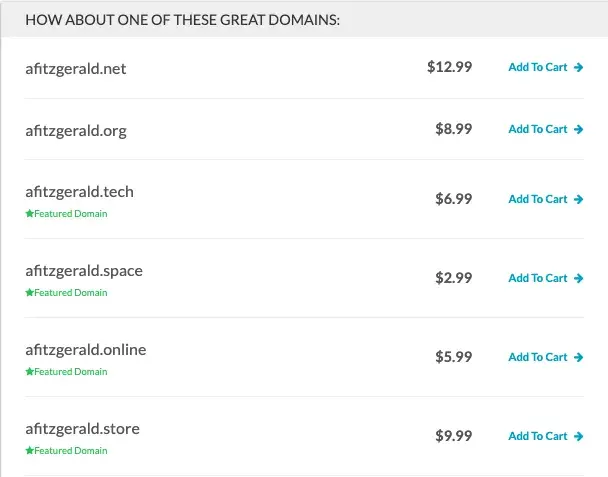
4. Add domain privacy and protection to your cart.
I can't emphasize enough the importance of securing your website with good privacy practices. After choosing my name and beginning to check out, I add domain privacy and protection.
If you skip this step, your personal information (including name, address, phone number, and email) gets listed in the public WHOIS database for anyone to view. The Internet Corporation for Assigned Names and Numbers (ICANN), which oversees and approves domain registrars, requires this information.
Adding domain privacy and protection protects my personal information from appearing in the public database — and that prevents threats and attacks on my website.

5. Purchase alternatives of your custom domain.
I may consider buying an alternative to my main custom domain in certain situations. Some circumstances warrant an alternative, including if customers often misspell the domain name or if I’d like another extension. This will retain traffic intended for the website when users enter the incorrect address in their browser.
For example, we might purchase andreaefitzgerald.com as well as andreaefitzgerald.blog in case people type my name and “blog” into Google and click on the latter URL.

6. Select your term of registration.
We’re over halfway to making our custom domain dreams a reality! Once I’ve added my custom domain, desired alternatives, and domain privacy and protection to the cart, I select the duration I want to register the domain. If I know I’ll have the site for years to come, I could save money by signing up for a longer amount of time. However, this costs more upfront.
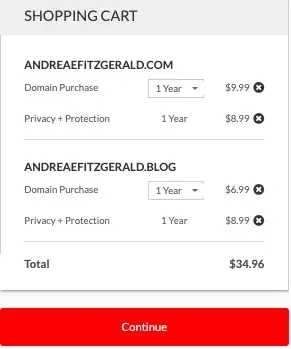
To pay the least amount upfront, I usually register it for one year. I can always renew for a longer term later.
7. Buy an email domain and other add-ons.
During the checkout process, most domain registrars offer an array of add-ons, from email to hosting to SSL certification. Your website building platform will likely include most of these features in its hosting plans — except for email.
For example, with Content Hub, you get hosting, SSL certification, website building/design tools, and built-in security features. But, you'll want to buy a professional email address that matches your domain. This can help ensure your customers read your marketing emails instead of sending them straight to spam.
Later, connect your email sending domain to HubSpot or whatever platform you use when setting up your site.
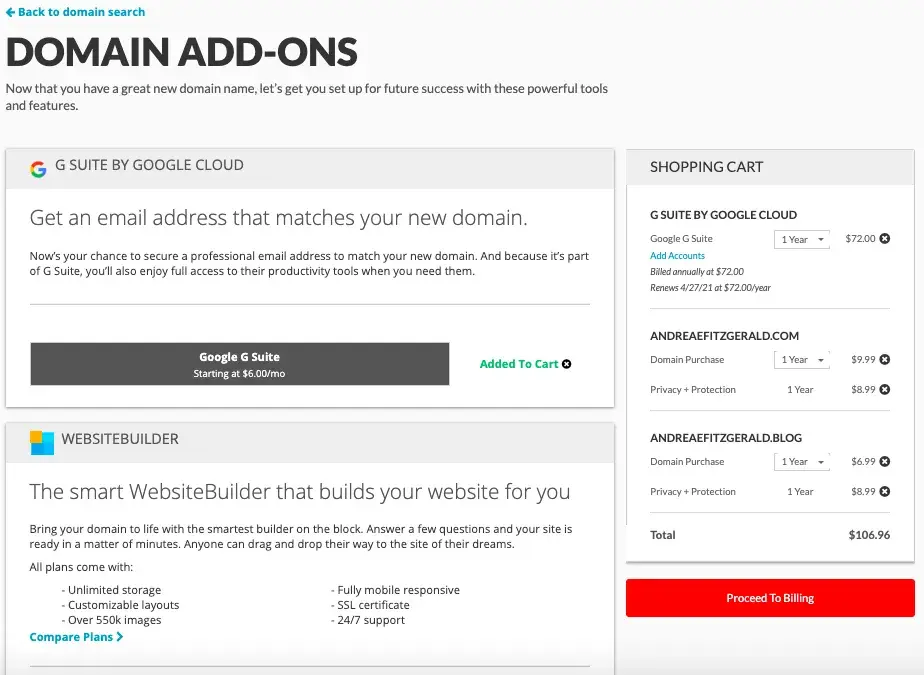
8. Enter your payment information.
Once I’ve added everything I need to my cart, I proceed to billing. Here, I fill in payment and billing information to officially own the domain name.
9. Connect your domain to your hosting account.
With the custom domain officially registered, all that's left to do is connect it to my hosting account or website platform.
Say I’ve decided to build the website on Content Hub. I can connect a domain to HubSpot in a few easy steps from my dashboard.
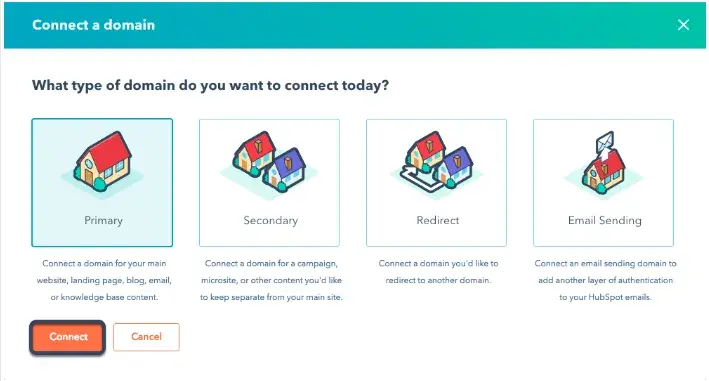
Pro tip: Unlike other free website builders, HubSpot allows you to connect your custom domain to your website without upgrading to a paid plan. That means you can hit the ground running with a professional site complete with a branded name.
Buy a Custom Domain for a Credibility Boost
It’s a long time since I’ve seen a business rely on generic domains, but I definitely still see some poorly thought-out custom domain selections.
My best advice? If you’re setting up a new website or thinking of moving to a new domain, do your research. See what’s available, keep it branded, simple, and as connected to your business name and brand identity as possible.
Editor's note: This post was originally published in April 2020 and has been updated for comprehensiveness.
Web Hosting




.jpg)
.webp)






